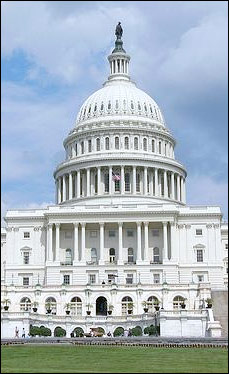The question as to which of the two party’s polling methodology and turnout model projection was correct was answered in the this morning’s early hours, as the Democratic projections proved to be spot on.
As they predicted, Pres. Barack Obama was re-elected with what could be as many as 332 Electoral Votes, should he carry still-outstanding Florida. The absentee ballots will determine the winner at a later date, but the outcome from what was formerly challenger Mitt Romney’s most important state is now irrelevant in determining the victor.
The race was as close as forecast, with the president taking the popular vote, preliminarily, by some 2.5 million ballots, an approximate margin of 51.1 percent. The individual core states of Florida, North Carolina, Virginia and Ohio were just as close as the national popular vote but, in the end, the president captured at least two of the four places, and possibly three, that Romney was virtually forced to win.
As has been the case since 2006, inclusive, the Senate races ended in a run. And, as in two of the three immediately previous elections, it was the Democrats who scored big. Despite having to defend 23 of 33 Senate seats, the Democrats will fare no worse than breaking even and quite possibly will see a net gain of two seats. Both Montana and North Dakota remain outstanding at this writing, going to political overtime. In the Big Sky Country, it will be the final counting plus the absentee ballots in both states that will determine the winner. But, Democratic Sen. Jon Tester (MT) and former Attorney General Heidi Heitkamp (ND) lead in both races. If the two hold their leads, the final Senate margin will increase to 55D-45R.
At the beginning of the election cycle, considering Republicans needed to win only 14 of 33 Senate races to capture the majority, such an outcome was only remotely considered. Again, the polling proved to be spot on, and did correctly forecast the Democratic surge at the end for all of the competitive races. Only in Arizona (senator-elect Jeff Flake) and Nevada (Sen. Dean Heller) did the Republican candidates prevail.
In the House, Republicans held their majority but Democrats cut into their advantage. With 12 races remaining uncalled, the Republicans have 232 seats compared to the Democrats’ 191. Since the LA-3 contest ended in two Republican candidates headed to a post-election run-off (Dec. 1 – Reps. Charles Boustany and Jeff Landry), the minimum GOP number for the ensuing Congress will be 233. Of the remaining 11 races, they have the pre-absentee ballot counting edge in only two, so if trends hold constant in all results, the party division will be 235R-200D, or a gain of seven seats for the Democrats.
Most of the outstanding elections are in Arizona and California, and they are razor-thin. The margins are as follows:
- AZ-1: The result here could mark the return of former Rep. Ann Kirkpatrick (D). She has a 6,716 vote margin over former state Sen. Jonathan Paton (R). About 1% of the total vote remains to be counted before absentee ballot tabulation.
- AZ-2: In a real surprise, Republican challenger Martha McSally has a very slight 386 vote lead over just-elected Rep. Ron Barber (D) in the Tucson region seat. This is the former district of ex-Rep. Gabrielle Giffords (D). Barber, her former staff member, won a similar district in a June special election. Absentee ballots will be the determining factor here.
- AZ-9: The absentees will help decide this marginal race, too, as former state Sen. Kyrsten Sinema (D) has a small 2,101 vote edge over Paradise Valley Mayor Vernon Parker (R). This race never veered from a small Sinema lead all night.
- CA-7: Challenger Ami Bera (D) leads Rep. Dan Lungren (R) by just 184 votes, but thousands of absentee ballots remain.
- CA-26: Democrat Julia Brownley has a 7,099 vote lead over state Sen. Tony Strickland (R), but again the thousands of absentee ballots will make the final call.
- CA-36: Challenger Raul Ruiz (D) leads Rep. Mary Bono Mack (R) by 3,451 votes, but only 57.4% of total universe of ballots has been counted. There could be as many as 50,000 ballots left here and in CA-7.
- CA-52: Absentees will also determine the winner in this San Diego district, as challenger Scott Peters (D) leads Rep. Brian Bilbray (R) by just 685 votes.
- FL-18: Freshman Rep. Allen West (R) finds himself trailing newcomer Patrick Murphy by 2,456 votes, and absentees will also determine the final victor here, too.
- LA-3: As mentioned above, the 3rd District race will move to a Dec. 1 run-off election between two Republican incumbents. Rep. Charles Boustany has a 45-30% lead over Rep. Jeff Landry heading to a secondary election that is sure to produce a Republican winner.
- MI-1: Freshman Rep. Dan Benishek (R) is holding a small 2,297 vote advantage over former state Rep. Gary McDowell (D). The absentee ballots could still change the outcome here, as well.
- NC-7: Democratic Rep. Mike McIntyre is holding a mere 378 vote lead over state Sen. David Rouzer (R), with thousands of absentee ballots remaining.
Analysis of all these and other results and trends coming later today.








